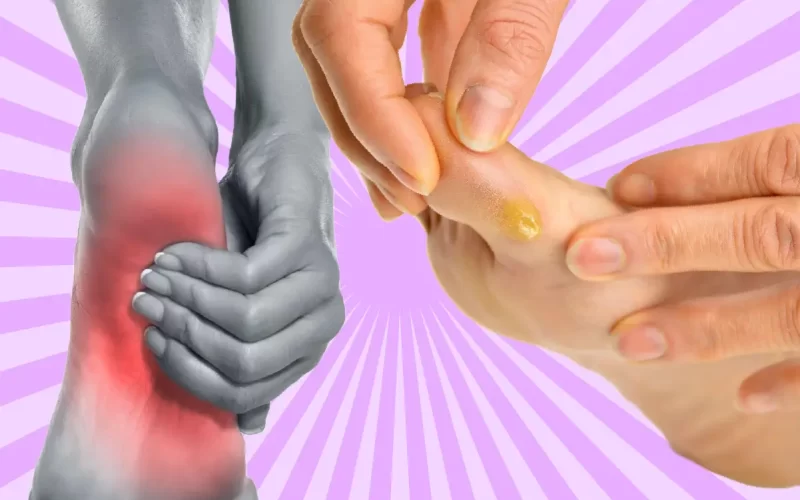Table of Contents Show
Corns are common foot problems that affect many people. They are thick, hard patches of skin that form on the toes or the sides of the feet due to friction or pressure. Corns can cause pain, discomfort, and difficulty in walking or wearing shoes.
But what does a corn look like after removed? How can you tell if you have successfully gotten rid of a foot corn? And how can you prevent foot corn from coming back? In this article, we will answer these questions and provide you with some useful tips and tricks to deal with foot corn.
what does a corn on the foot look like before removal?
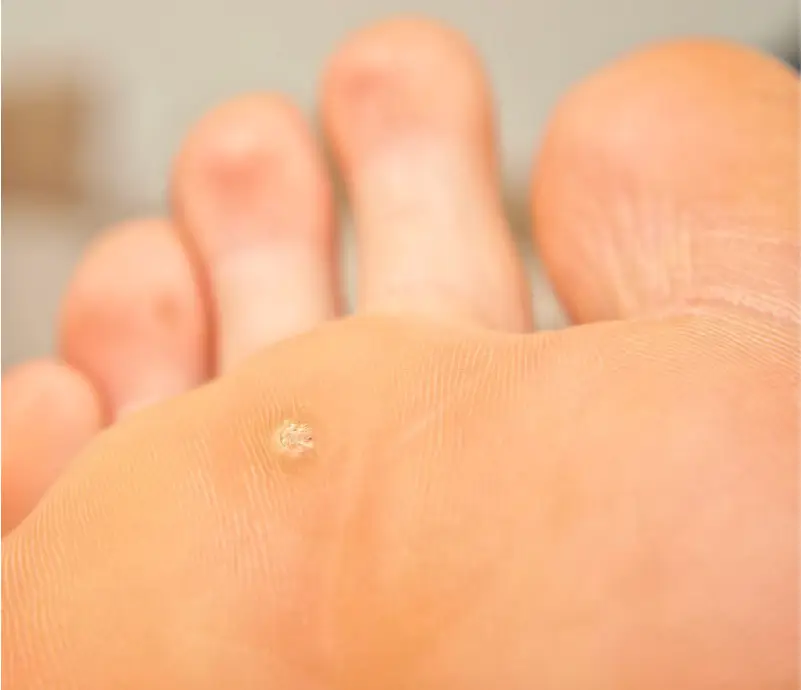

Before we talk about what does a corn look like after removed, let’s first understand what does a corn look like before removal. There are different types of foot corn that can develop on the feet, depending on their location, shape, and size. Here are some common types of corns and their characteristics:
- Hard foot corn: These are small, round, raised bumps of hardened skin surrounded by irritated skin. They usually form on the tops or the sides of the toes, especially the little toe. They have a dense core of dead skin cells at the center that presses on the underlying nerves and causes pain.
- Soft foot corn: These are whitish or grayish patches of soft, moist skin that form between the toes. They are often caused by wearing tight shoes or socks that rub against the toes. They can also be infected by bacteria or fungi and become red, swollen, and painful.
- Seed foot corn: These are tiny, yellowish spots of hard skin that form on the bottom of the feet, especially on the balls or the heels. They are often painless and may be caused by blocked sweat glands or dry skin.
- Fibrous foot corn: These are hard corns that have been present for a long time and have attached to the deeper layers of the skin. They can be very painful and difficult to remove.
How to Remove foot corn?
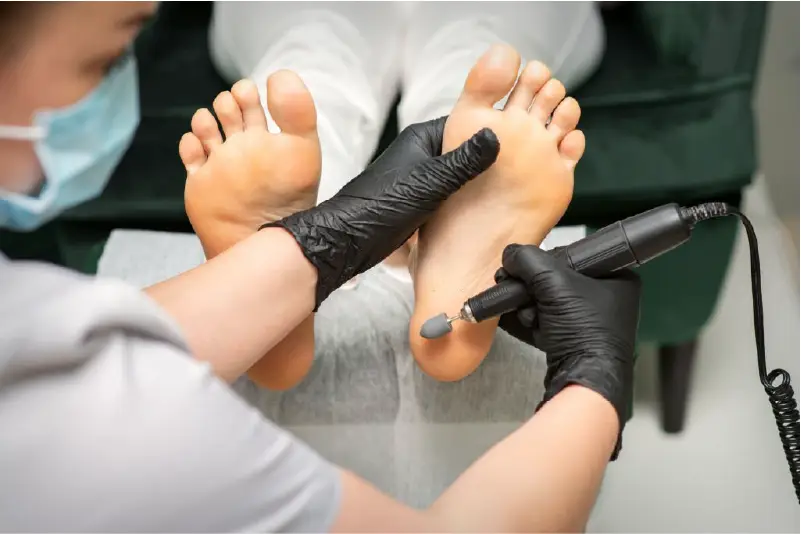

There are various methods to remove corns on feet, depending on their type, severity, and location. Some of the common methods are:
- Soaking and filing: This is a simple and effective way to soften and reduce the size of foot corn. You can soak your feet in warm water with Epsom salt or baking soda for 10 to 15 minutes, then gently rub the corn with a pumice stone, an emery board, or a callus shaver. You can also apply moisturizer or castor oil after filing to keep the skin hydrated and smooth.
- Salicylic acid: This is a chemical that helps dissolve the dead skin cells that make up the foot corn. You can buy over-the-counter products that contain salicylic acid, such as patches, plasters, creams, or liquids, and apply them to the affected area as directed. You should avoid applying salicylic acid to healthy skin or open wounds, as it can cause irritation or infection.
- Medicated pads: These are adhesive pads that have a hole in the center to protect the corn from pressure and friction. They also contain medication that helps soften and remove the foot corn. You can stick them to the affected area and change them regularly until the corn is gone.
- Surgery: This is a last resort option for severe or persistent corns that do not respond to other treatments. A podiatrist (a doctor who specializes in foot care) can perform a minor surgery to cut out the foot corn and its core. This may require local anesthesia and may cause some bleeding or scarring.
what does a corn look like after removed?
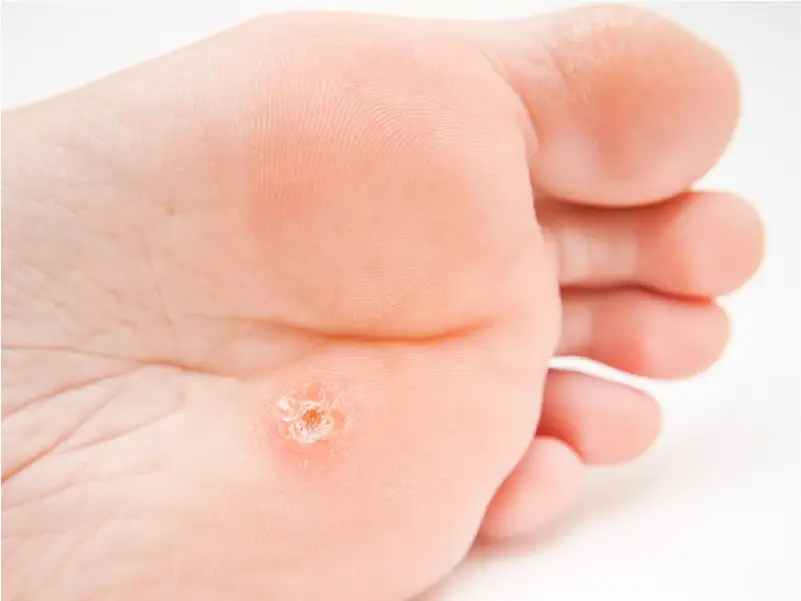

After removing the foot corn, you may notice some changes in the appearance of your skin. Depending on the method you used to remove the corn, you may see:
- A smoother, healthier area of skin: This is the ideal outcome after removing a corn. The skin where the foot corn was may appear a bit red or tender at first, but it should heal and become more like the surrounding skin over time.
- A small, open wound: This may happen if you used a sharp instrument to cut off the corn or if you peeled off a salicylic acid patch too soon. The wound may bleed or ooze some fluid and may be prone to infection. You should clean it with soap and water, apply an antibiotic ointment, and cover it with a bandage until it heals.
- A white spot: This may happen if you used salicylic acid to dissolve the foot corn. The white spot is actually dead skin that has been loosened by the acid and is ready to be removed. You can gently peel off the white spot with your fingers or a tweezers and reveal the new skin underneath.
- A dark spot: This may happen if you used a medicated pad to treat the corn. The dark spot is actually a scab that forms over the corn as it heals. You should not pick at the scab, as it may cause bleeding or infection. The scab will fall off on its own when the skin is fully healed.
How to Prevent foot corn?
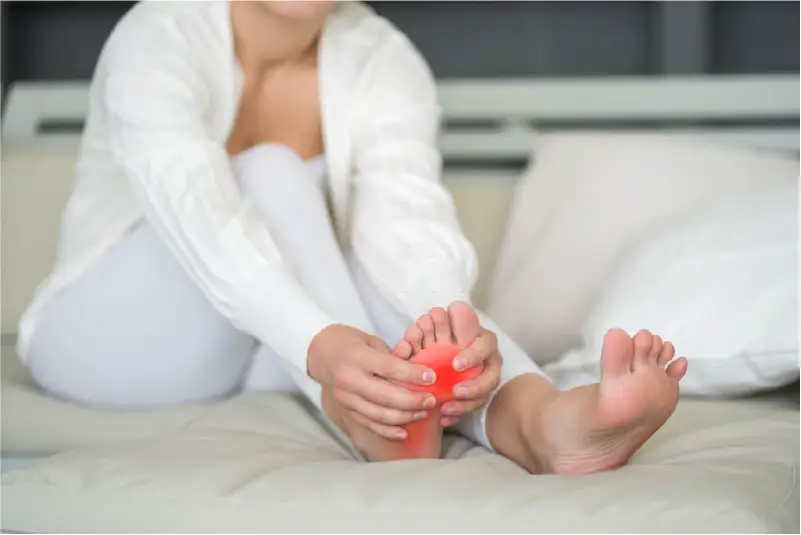

The best way to prevent corns on feet is to avoid the factors that cause them in the first place. Here are some tips to prevent corns on feet:
- Wear comfortable shoes and socks: Choose shoes that fit well, have enough room for your toes, and have a low or moderate heel. Avoid shoes that are too tight, too loose, too high, or have seams or stitches that rub against your feet. Wear socks that are made of natural fibers, such as cotton or wool, and that fit snugly but not too tightly.
- Protect your feet: Use protective pads, cushions, or insoles to reduce the pressure and friction on your feet. You can buy them at pharmacies or online, or you can make your own by cutting out pieces of felt or foam. Place them over the areas where you tend to develop foot corn, such as the tops or the sides of your toes.
- Keep your feet clean and moisturized: Wash your feet daily with soap and water and dry them thoroughly. Apply a moisturizer or a foot cream to keep your skin soft and supple. Avoid using products that contain alcohol, as they can dry out your skin and make it more prone to cracking.
- Trim your toenails regularly: Cut your toenails straight across and not too short, as this can prevent them from digging into your skin and causing ingrown toenails or foot corn. Use a nail file to smooth out any rough edges. Do not cut or peel off any skin around your nails, as this can cause infection or bleeding.
How to Identify Corns on Feet?
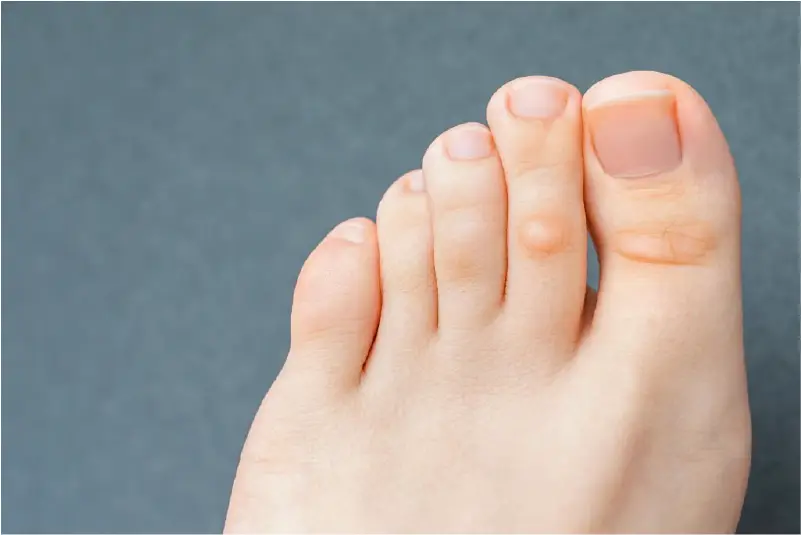

Corns on feet can be easily identified by their appearance and location. However, some foot corn may be confused with other foot conditions, such as warts, blisters, bunions, or hammertoes. Therefore, it is important to know how to distinguish foot corn from other foot problems. Here are some clues that can help you identify corns on feet:
- Foot corn is usually small, round, and raised bumps of hard skin that form on the toes or the sides of the feet.
- Foot corn has a hard core at the center that presses on the nerves and causes pain. The core may be visible as a dark spot or a hole in the middle of the corn.
- Foot corn is often surrounded by inflamed or irritated skin that may be red, swollen, or tender.
- Foot corn is usually caused by wearing shoes or socks that are too tight, too loose, or have seams or stitches that rub against the skin. They may also be caused by walking barefoot on rough surfaces or having abnormal foot shapes or movements.
- Foot corn may affect one or more toes or areas of the foot. They may occur singly or in clusters.
How to Treat Foot corn Naturally?
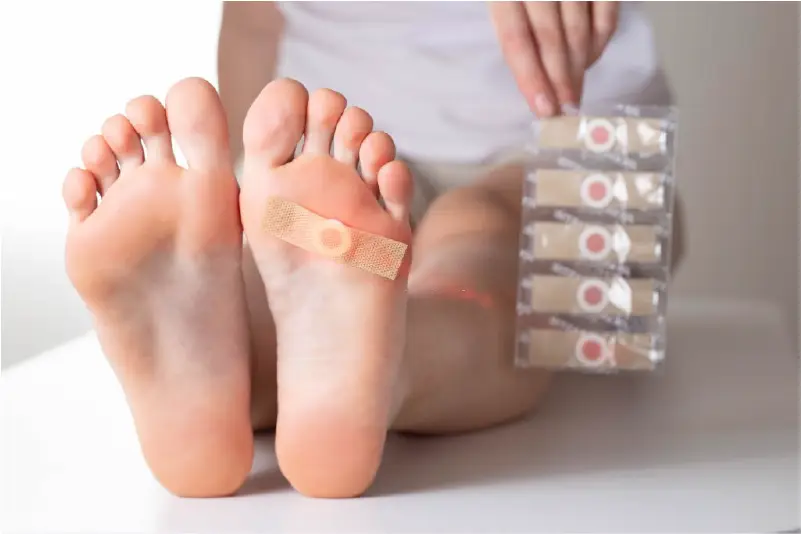

If you prefer to treat foot corn naturally, without using any chemicals or medications, there are some home remedies that you can try. However, you should be careful and gentle when using these remedies, as they may not work for everyone and may cause adverse reactions in some cases. You should also consult your doctor before trying any home remedies, especially if you have diabetes, poor circulation, nerve damage, or any other medical condition that affects your feet. Here are some natural remedies that you can try to treat corns on feet:
- Apple cider vinegar: This is a natural acid that can help soften and remove the dead skin cells that make up the corn. You can soak a cotton ball in apple cider vinegar and apply it to the corn for 10 minutes before filing it with a pumice stone. You can also add some apple cider vinegar to warm water and soak your feet in it for 15 minutes before filing the corn.
- Baking soda: This is a natural exfoliant that can help scrub away the dead skin cells that make up the corn. You can make a paste of baking soda and water and apply it to the corn for 10 minutes before rinsing it off and filing it with a pumice stone. You can also add some baking soda to warm water and soak your feet in it for 15 minutes before filing the corn.
- Lemon: This is a natural acid and astringent that can help dissolve and dry out the dead skin cells that make up the corn. You can slice a lemon and place it over the corn for 10 minutes before removing it and filing it with a pumice stone. You can also squeeze some lemon juice on the corn and let it dry before filing it with a pumice stone.
- Turmeric: This is a natural anti-inflammatory and antiseptic that can help reduce the pain and infection associated with corns. You can make a paste of turmeric powder and honey and apply it to the corn for 10 minutes before washing it off and filing it with a pumice stone. You can also mix some turmeric powder with warm water and drink it to boost your immunity and healing.
How to Choose the Right Shoes and Socks for Corns on Feet?
One of the main causes of corns on feet is wearing shoes and socks that do not fit properly or that cause friction or pressure on the skin. Therefore, choosing the right shoes and socks for your feet is essential to prevent and treat corns on feet. Here are some tips to choose the right shoes and socks for corns on feet:
- Measure your feet: Your feet size and shape may change over time due to factors such as age, weight, pregnancy, or injury. Therefore, you should measure your feet regularly and buy shoes that match your current measurements. You should measure your feet at the end of the day when they are at their largest. You should also measure both feet and buy shoes based on the larger foot.
- Try on shoes: You should always try on shoes before buying them and walk around in them for a few minutes to see how they feel. You should avoid buying shoes online unless you are sure about your size and fit. You should look for shoes that have enough room for your toes to wiggle, have a low or moderate heel, have a cushioned sole, have a breathable material, and have smooth seams or stitches.
- Wear socks: You should always wear socks with your shoes to protect your feet from friction or pressure. You should choose socks that are made of natural fibers, such as cotton or wool, that fit snugly but not too tightly, that have no seams or stitches that rub against your feet, and that are changed daily to keep your feet clean and dry.
FAQs on what does a corn look like after removed
Here are some frequently asked questions about what does a corn look like after removed.
What is the difference between a foot corn and a callus?
A corn and a callus are both thickened areas of skin that form due to friction or pressure. However, they have some differences in their appearance and location. A corn is usually smaller, rounder, and more raised than a callus. It has a hard core at the center that presses on the nerves and causes pain. A corn usually forms on the toes or the sides of the feet. A callus is usually larger, flatter, and less sensitive than a corn. It does not have a core and does not cause pain unless it cracks or becomes infected. A callus usually forms on the palms, the knees, the heels, or the balls of the feet.
Are corns contagious?
No, corns are not contagious. They are not caused by bacteria, viruses, fungi, or any other microorganisms that can be transmitted from person to person. They are caused by mechanical factors, such as friction or pressure. However, some factors that can increase the risk of developing corns, such as dry skin, poor circulation, or fungal infections, may be contagious or related to underlying health conditions. Therefore, it is advisable to consult a doctor if you have persistent or severe corns or if you notice any signs of infection, such as redness, swelling, pus, or fever.
How long does it take for a foot corn to heal?
The healing time of a corn depends on several factors, such as the type and size of the corn, the method of removal, and the aftercare. Generally speaking, a corn may take from a few days to a few weeks to heal completely. However, some corns may recur or become chronic if the cause is not addressed or if the treatment is not effective. To speed up the healing process and prevent complications, you should follow these steps:
- Keep the affected area clean and dry.
- Apply a moisturizer or a wound-healing cream to the affected area.
- Change the bandage or dressing regularly.
- Avoid wearing shoes or socks that rub or squeeze your feet.
- Wear protective pads or cushions to reduce pressure and friction on your feet.
- Seek medical attention if you notice any signs of infection or if the corn does not improve after two weeks.
Can I remove a foot corn at home?
Yes, you can remove a corn at home using some simple and safe methods, such as soaking and filing, salicylic acid, or medicated pads. However, you should be careful and gentle when removing a corn at home, as you may cause more damage or infection to your skin if you are not careful. You should avoid using any sharp or unsterile instruments, such as scissors, knives, or razors, to cut off the corn.
You should also avoid using any home remedies that are not proven to be effective or safe, such as vinegar, lemon juice, garlic, onion, or duct tape. These may irritate your skin or cause allergic reactions. If you have diabetes, poor circulation, nerve damage, or any other medical condition that affects your feet, you should not attempt to remove a corn at home without consulting your doctor first.
Conclusion on what does a corn look like after removed
Corns are common foot problems that can cause pain and discomfort. They are caused by friction or pressure on the skin of the feet. There are different types of corns that can form on different parts of the feet. To remove a corn, you can use various methods, such as soaking and filing, salicylic acid, medicated pads, or surgery. After removing a corn, you may notice some changes in the appearance of your skin.
You should take good care of your skin and prevent corns from coming back by wearing comfortable shoes and socks, protecting your feet with pads or cushions, keeping your feet clean and moisturized, and trimming your toenails regularly. If you have any questions or concerns about corns on feet, you should consult your doctor for advice and treatment.
I hope this article was helpful and informative for you. Thank you for reading! 😊
